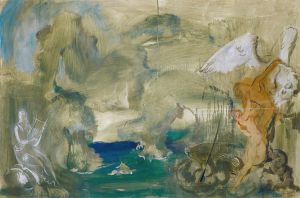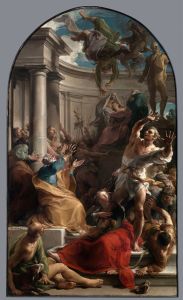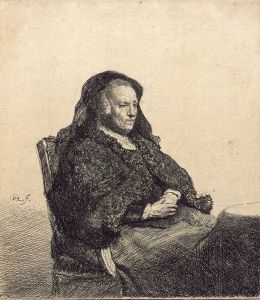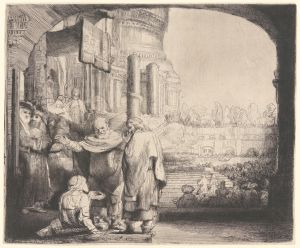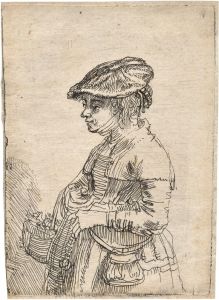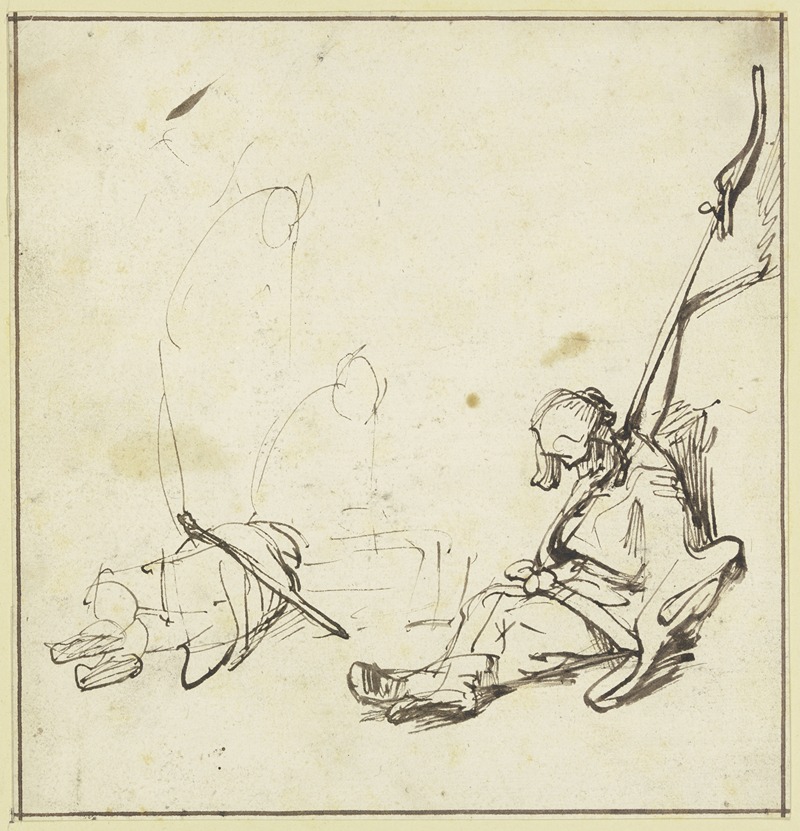
Die Wächter am Gefängnis des Petrus
A hand-painted replica of Rembrandt van Rijn’s masterpiece Die Wächter am Gefängnis des Petrus, meticulously crafted by professional artists to capture the true essence of the original. Each piece is created with museum-quality canvas and rare mineral pigments, carefully painted by experienced artists with delicate brushstrokes and rich, layered colors to perfectly recreate the texture of the original artwork. Unlike machine-printed reproductions, this hand-painted version brings the painting to life, infused with the artist’s emotions and skill in every stroke. Whether for personal collection or home decoration, it instantly elevates the artistic atmosphere of any space.
"Die Wächter am Gefängnis des Petrus" (The Prison Guards at the Jail of St. Peter) is a painting by the renowned Dutch artist Rembrandt van Rijn. This artwork is a notable example of Rembrandt's mastery in the use of light and shadow, a technique known as chiaroscuro, which he employed to create dramatic intensity and depth in his compositions.
Rembrandt Harmenszoon van Rijn, born on July 15, 1606, in Leiden, Netherlands, is widely regarded as one of the greatest visual artists in the history of art and the most important in Dutch art history. His contributions to art include a vast array of portraits, self-portraits, landscapes, genre scenes, historical scenes, biblical and mythological themes, and animal studies.
The painting "Die Wächter am Gefängnis des Petrus" depicts a scene from the New Testament, specifically the Acts of the Apostles (Acts 12:6-7). The narrative describes how Saint Peter, imprisoned by King Herod, was miraculously freed by an angel. The guards, who were supposed to be watching over Peter, are shown in a state of slumber, oblivious to the divine intervention occurring in their midst.
In this work, Rembrandt captures the moment with his characteristic attention to detail and emotional depth. The use of light in the painting is particularly striking; the angel's presence is suggested through a subtle yet powerful illumination that contrasts with the dimly lit surroundings of the prison. This technique not only highlights the central figures but also enhances the spiritual and miraculous nature of the event.
Rembrandt's ability to convey complex human emotions and divine occurrences through his art is evident in this painting. The expressions and postures of the guards, combined with the ethereal light surrounding the angel and Peter, create a compelling narrative that draws the viewer into the biblical story.
The painting is also a testament to Rembrandt's skill in composition and his innovative approach to storytelling through art. His use of chiaroscuro not only adds a dramatic effect but also guides the viewer's eye to the focal points of the scene, ensuring that the narrative is both clear and impactful.
"Die Wächter am Gefängnis des Petrus" is part of Rembrandt's extensive body of work that explores religious themes. Throughout his career, Rembrandt produced numerous paintings, etchings, and drawings that depicted scenes from the Bible, reflecting his deep interest in religious subjects and his ability to bring these stories to life with profound empathy and realism.
The painting is housed in the Staatliche Kunstsammlungen Dresden, one of the most significant art collections in Germany. The collection includes a wide range of works from various periods and styles, and Rembrandt's painting is among its most treasured pieces.
In summary, "Die Wächter am Gefängnis des Petrus" is a remarkable example of Rembrandt van Rijn's artistic genius. Through his masterful use of light and shadow, detailed composition, and emotional depth, Rembrandt brings to life the biblical story of Saint Peter's miraculous escape, making it a timeless piece that continues to captivate audiences.






